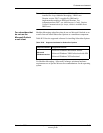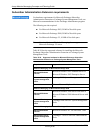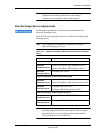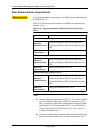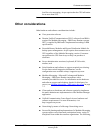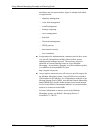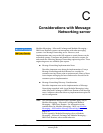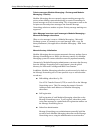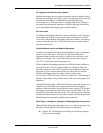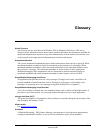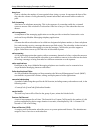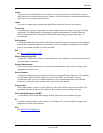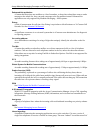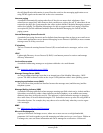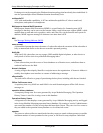
Considerations with Message Networking server
November 2004
Avaya Modular Messaging Concepts and
Planning Guide
C-3
No ongoing automatic directory updates
Modular Messaging does not support automatic directory updates from a
Message Networking server. Hence, there is an ongoing need to manually
synchronize the databases of Modular Messaging and Message
Networking server. Each time there is a change (add, delete, change) in
any subscriber information, databases of both the Message Networking
server and Modular Messaging require manual updates.
No voice name
For Modular Messaging subscribers, remote subscribers on the Message
Networking server have a text-to-speech name, rather than a recorded
voice name. When Modular Messaging subscribers address a message to
a remote subscriber from the TUI, they hear the text-to-speech name of
that remote subscriber.
Double database entries on Modular Messaging
Currently, the Modular Messaging internal database stores two database
entries for each subscriber—one entry is based on the subscriber
telephone number and the other entry is based on the subscriber e-mail
address. For example, for a certain subscriber, the two entries may be
303-555-1234 and subscriber@company.com.
When a Modular Messaging subscriber uses Dial-by-Name to address a
message from the TUI, this internal database is referenced. When the
subscriber spells the name of the recipient on the telephone keypad, the
subscriber is given a choice between the two entries for the recipient.
Modular Messaging renders the name of the recipient, using
text-to-speech (TTS) conversion. However, because the TTS rendering of
both the e-mail address entry and the name are the same, they appear to be
duplicates.
With Modular Messaging—IBM Lotus Domino, a potential solution is to
establish a secondary directory with the entries based on telephone
numbers. When subscribers use the Dial-by-Name from the TUI, Modular
Messaging presents this secondary directory to the subscriber. Thus, the
subscriber is presented with only one the TTS rendering for the telephone
number-based entry. However, this solution requires a third database that
administrators must manually maintain and synchronize.
Receiving or sending fax messages via Message Networking server
When Modular Messaging subscribers receive or send fax messages via a
Message Networking server, the following are not supported:
! Group 4 fax. The Message Networking server does not support
Group 4 fax transcoding.



